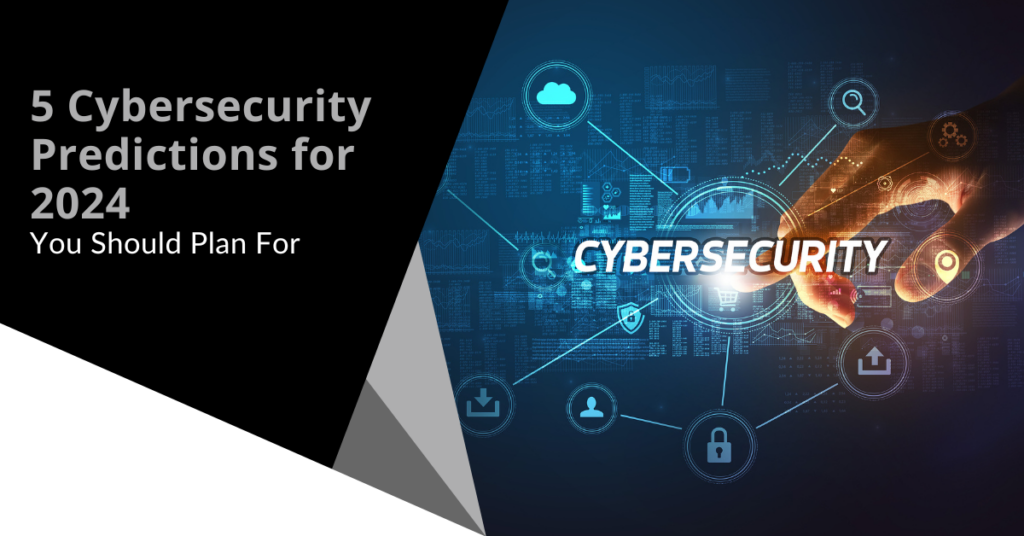Ensure cyber resilience to minimize risks and safeguard business operations.
Wiki Article
Leading Cybersecurity Forecasts for 2024: Remain Ahead of Emerging Threats
As we approach 2024, the cybersecurity landscape is positioned for considerable makeover, driven by arising dangers that organizations must not only prepare for however additionally tactically address. The rise of AI-driven cyberattacks, coupled with increasingly advanced ransomware methods, highlights the immediate demand for innovative defenses. In addition, the growing variety of IoT devices provides brand-new susceptabilities that might be exploited. With governing changes on the horizon and a crucial emphasis on cybersecurity training, it is crucial for organizations to reassess their techniques to remain durable. Just how prepared are you to navigate these advancing challenges?Rise of AI-Driven Assaults
As companies significantly embrace expert system innovations, the capacity for AI-driven attacks is ending up being a paramount worry in cybersecurity. Cybercriminals are leveraging AI to boost the refinement and efficacy of their attacks, creating a landscape where typical safety and security steps might falter. These assaults can make use of artificial intelligence algorithms to recognize susceptabilities in systems and networks, leading to more targeted and damaging breaches.AI can automate the reconnaissance phase of an attack, making it possible for opponents to collect substantial amounts of data swiftly (Deepfake Social Engineering Attacks). This ability not just shortens the moment required to launch a strike yet also raises its accuracy, making it harder for defenders to prepare for and mitigate dangers. Furthermore, AI can be made use of to produce convincing phishing plans, produce deepfake material, or adjust data, additionally complicating the cybersecurity landscape
Organizations should prioritize the integration of AI-driven cybersecurity solutions to counter these emerging risks. By using advanced hazard detection systems, companies can improve their capability to determine and counteract AI-generated assaults in genuine time. Continual investment in training and awareness programs is additionally vital, as it furnishes workers to identify and respond to possible AI-driven risks efficiently.
Boosted Ransomware Class
The surge of AI-driven attacks is not the only fad reshaping the cybersecurity landscape; ransomware attacks have actually also developed, coming to be increasingly sophisticated and targeted. As cybercriminals fine-tune their methods, companies encounter enhanced threats that require flexible approaches to mitigate possible damages.
Modern ransomware hazards now utilize progressed methods, such as double extortion, where attackers not just encrypt information but additionally threaten to leakage delicate information if their needs are not met. This includes an extra layer of pressure on victims, commonly compelling them to pay ransoms to protect their online reputations and customer trust fund.
Furthermore, making use of automated devices and device understanding formulas by wrongdoers has streamlined the attack process, enabling them to determine vulnerabilities extra effectively and personalize their strategies versus certain targets. Such developments have resulted in a disconcerting rise of attacks on important framework, medical care systems, and supply chains, emphasizing the demand for robust cybersecurity frameworks that focus on real-time hazard detection and response.
To respond to these progressing threats, companies should purchase thorough training, progressed protection technologies, and incident action intends that integrate lessons learned from previous ransomware incidents, ensuring they stay one action ahead of progressively complicated assaults.
Development of IoT Susceptabilities
With the fast expansion of the Internet of Points (IoT), susceptabilities related to these interconnected gadgets have actually ended up being a critical problem for companies and people alike. The spreading of smart gadgets, from home devices to industrial sensors, has actually produced an extensive strike surface area for cybercriminals. Many IoT tools are deployed with very little safety methods, frequently making use of default passwords or obsolete firmware, making them vulnerable to exploitation.As gadgets come to be interconnected, the possibility for large attacks increases. Endangered IoT devices can offer as access points for enemies to penetrate more safe networks or launch Distributed Rejection of Solution (DDoS) assaults. The lack of standardization in IoT protection gauges additional worsens these susceptabilities, as varying producers carry out differing levels of safety
In addition, the enhancing refinement of malware targeting IoT gadgets postures substantial dangers. Danger stars are continually establishing new techniques to manipulate these weaknesses, bring about potential information violations and unapproved accessibility to sensitive information. As we move right into 2024, companies must prioritize IoT safety, executing durable steps to safeguard their networks and mitigate the threats related to this swiftly expanding landscape.
Governing Changes Influencing Safety And Security

In 2024, we expect to see more stringent conformity requirements for businesses, especially those that produce or deploy IoT devices. The introduction of policies such as the European Union's Cyber Resilience Act and updates to existing frameworks like the NIST Cybersecurity Framework will certainly stress security deliberately. Organizations will certainly be mandated to implement durable safety and security steps from the initial stages of item growth, ensuring an aggressive position versus prospective vulnerabilities.
Furthermore, governing bodies are likely to enforce significant fines for non-compliance, compelling businesses to prioritize cybersecurity investments. This shift will certainly not only improve the total safety and security posture of companies yet will also promote a society of responsibility in protecting individual information. As laws tighten, the obligation will increasingly drop on firms to show compliance and safeguard against the ever-evolving dangers in the digital landscape.
Focus on Cybersecurity Training
Organizations' dedication to cybersecurity training is ending up being significantly crucial as risks advance and attack vectors multiply. With cybercriminals continuously establishing advanced methods, it is extremely important for employees in any way degrees to recognize the dangers and identify their function in alleviating them. Comprehensive training programs equip personnel with the knowledge and skills required to identify prospective dangers, such as phishing attacks, social design tactics, and malware.Furthermore, a culture of cybersecurity awareness cultivates alertness amongst employees, minimizing the chance of human mistake, which stays a considerable vulnerability in numerous companies. Consistently updated training components that reflect the newest hazards will make sure that staff continue to be informed Deepfake Social Engineering Attacks and capable of responding efficiently.


In 2024, companies will likely focus on recurring education and simulation exercises, allowing staff members to exercise their reaction to real-world circumstances. Cooperation with cybersecurity experts for tailored training remedies may also come to be much more typical. Inevitably, buying worker training not just strengthens an organization's protection posture but also grows a proactive approach to cybersecurity, strengthening the idea that security is a shared obligation throughout the venture.
Verdict
In final thought, the cybersecurity landscape in 2024 will certainly be formed by the increase of AI-driven assaults, increasingly advanced ransomware methods, and the growth of susceptabilities linked with IoT tools. A strong focus on thorough cybersecurity training will certainly be important in growing an organizational culture resistant to arising risks.Report this wiki page